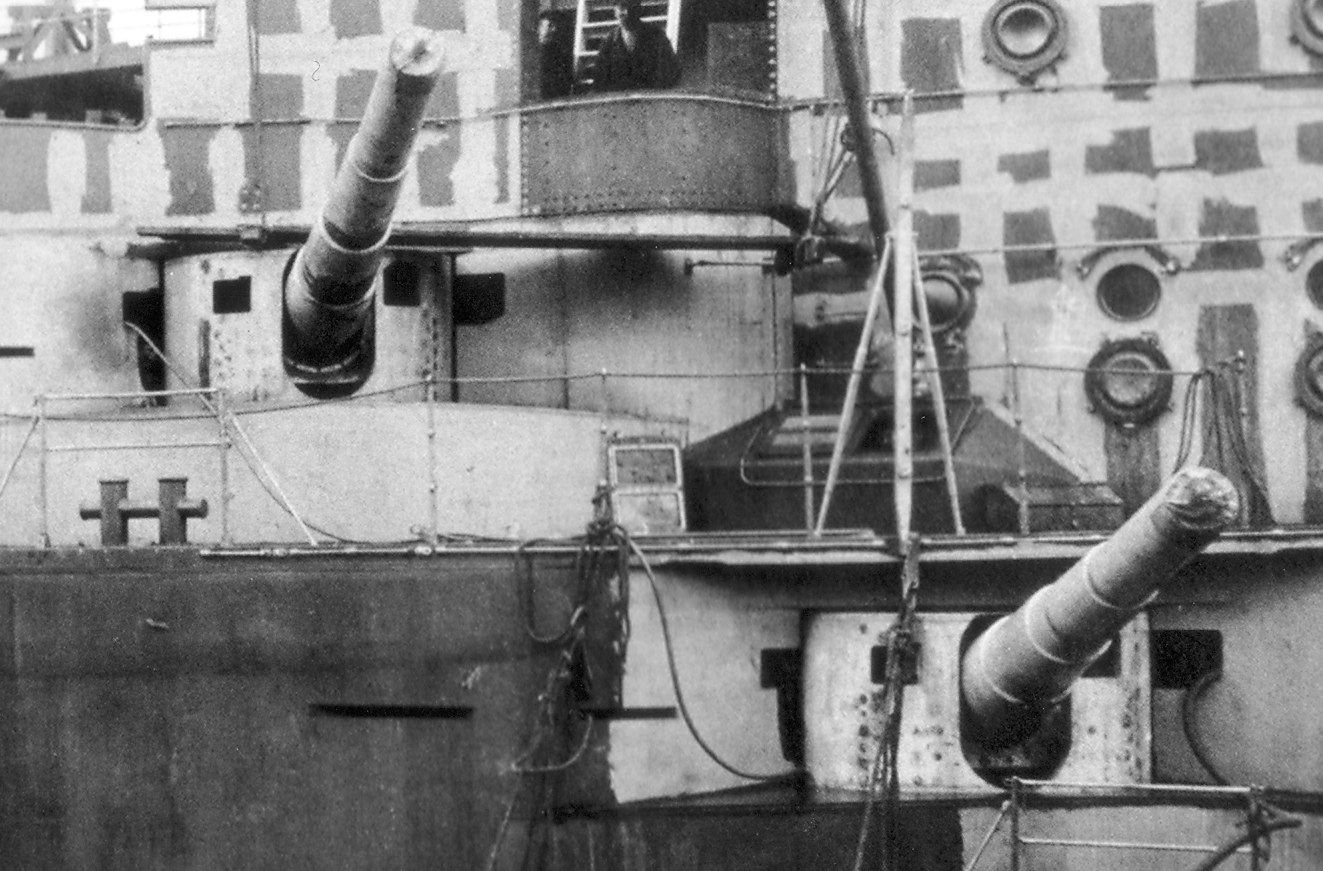This weapon was used as secondaries on German pre-deadnoughts. During World War I, a number of guns were removed from ships relegated to training duties and were then used as field artillery, rail guns and in coastal batteries.
In World War II these guns were still in use as coastal artillery. They were then supplied with a lighter shell with better ballistic shape and a larger propellant charge to give the weapon an increased range.
In the summer of 1941, Spain acquired eight of these guns which were used in two coastal batteries located on the Islands of Tenerife and Gran Canaria. These batteries were deactivated in 1959.
Constructed of A tube, two reinforcing layers and a jacket. Used a horizontally sliding breech mechanism.
Actual bore diameter was 17.26 cm (6.795 in).
| Designation | 17 cm/40 (6.75") SK L/40 |
|---|---|
| Ship Class Used On | Braunschweig and Deutschland (1904) Classes |
| Date Of Design | about 1904 |
| Date In Service | 1906 |
| Gun Weight | 23,700 lbs. (10,750 kg) inc. breech |
| Gun Length | 272.8 in (6.930 m) |
| Bore length | 242.4 in (6.411 m) |
| Rifling Length | N/A |
| Grooves | N/A |
| Lands | N/A |
| Twist | N/A |
| Chamber Volume | N/A |
| Rate Of Fire | 6 - 6.7 rounds per minute |
| Type | Separate |
|---|---|
| Projectile Types and Weights 1 | World War I
AP L/3: 141.1 lbs. (64.0 kg) HE L/3,3 nose fuze: 141.1 lbs. (64.0 kg) Shrapnel L/2,7: 141 lbs. (64 kg) World War II
|
| Bursting Charge | World War I 3 AP L/3: 3.92 lbs. (1.776 kg) TNT HE nose fuze L/3,3: 6.86 lbs. (3.112 kg) TNT HE L/4,7 nose fuze: 14.18 lbs. (6.430 kg) TNT 4 Shrapnel L/2,7: 1.61 lbs. (0.73 kg) black powder; 600 steel balls and pitch: 35.0 lbs. (15.876 kg) World War II 5 |
| Projectile Length | World War I
AP L/3: 20.5 in (52.0 cm) Common L/3,3: 22.2 in (56.35 cm) Shrapnel L/2,7: about 18.1 in (45.9 cm) World War II
|
| Propellant Charge 9 | World War I
51.8 lbs. (23.5 kg) RP C/00 or C/06 50.7 lbs. (23.0 kg) RP C/12 For Shrapnel shell only: about 16.5 lbs. (7.5 kg) RP C/12 10 World War II
|
| Cartridge Case Type, Size and Empty Weight | Brass, 210 x 1086 mm, about 28.2 lbs. (12.8 kg) 11 |
| Muzzle Velocity | World War I: 2,789 fps (850 mps)
World War II: 2,871 fps (875 mps) |
| Working Pressure | N/A |
| Approximate Barrel Life | N/A |
| Ammunition stowage per gun | 130 rounds |
- ^
Actual German designations AP L/3 17 cm Pzgr. L/3 HE nose fuze L/3,3 17 cm Spgr. L/3,3 (Kz) Shrapnel L/2,7 17 cm Stahlschrapnel L/2,7 HE L/4,7 nose fuze 17 cm Spgr. L/4,7 Kz (m.Hb) Illumination L/3,4 17 cm Lg L/3,4 APC M1943 17 cm Psgr. 43 - ^German HE nose Fuzed projectiles with ballistic caps had a rod between the nose of the shell and the fuze to improve performance when striking obliquely. See details on 12.7 cm SK C/34 datapage.
- ^Burster weights (reiner Sprengstoff) for World War I projectiles from "Diagrams of Great War."
- ^The HE L/4,7 nose fuze burster was made entirely with Fp 1.
- ^Burster weights (reiner Sprengstoff) for World War II projectiles from M.Dv. Nr. 170,38.
- ^The burster for the APC L/3 projectile of World War II was made from Fp 15 and Fp 1.
- ^The burster for the HE L/3,3 nose fuze projectile was made entirely with Fp 1.
- ^The burster for the HE L/4,7 nose fuze projectile was made entirely with Fp 1.
- ^Propellant weights differ in many references and even in official documents such as the M.Dv. Nr. 170 and M.Dv. Nr. 190 series. This seems to be the result of most charges being listed as "zu etwa" which means "to about." This was probably because the different propellant formulations used - such as C/32 or C/38 - varied in weight. In addition, different loading weights were used depending upon the powder grain size utilized to make up the charge. The weights in the table above are for the powder grain specified.
- ^Shrapnel shells were only fired with reduced charges.
- ^The cartridge rim diameter was 203,2 mm.
| Elevation | Distance |
|---|---|
| 22 degrees | 15,860 yards (14,500 m) |
| 30 degrees | 18,500 yards (17,000 m) |
| Elevation | Distance |
|---|---|
| 22 degrees | 22,000 yards (20,100 m) |
| Elevation | Distance |
|---|---|
| N/A | 10,720 yards (9,800 m) |
| Designation | Single turrets
Braunschweig (2): DrL C/01 Casemates
|
|---|---|
| Weight | DrL C/01: 71.8 - 73.8 tons(73 - 75 mt)
MPL C/02 and C/02-04: 23.8 to 24.5 tons (24.2 to 24.9 mt) |
| Elevation | Turrets: -5 / +30 degrees
Casemates: -5 / +22 degrees |
| Elevation Rate | Drl C/01: 2.2 degrees per second 1a |
| Train | about +80 / -80 degrees |
| Train Rate | N/A 1a |
| Gun recoil | N/A |
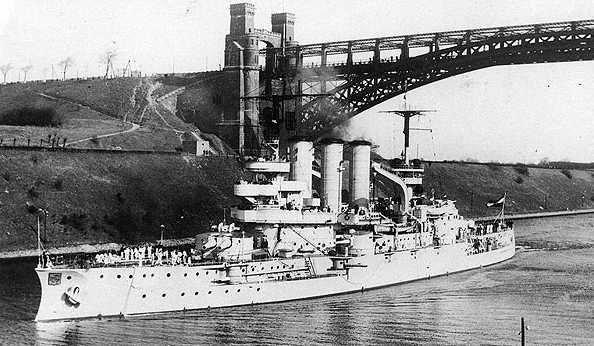
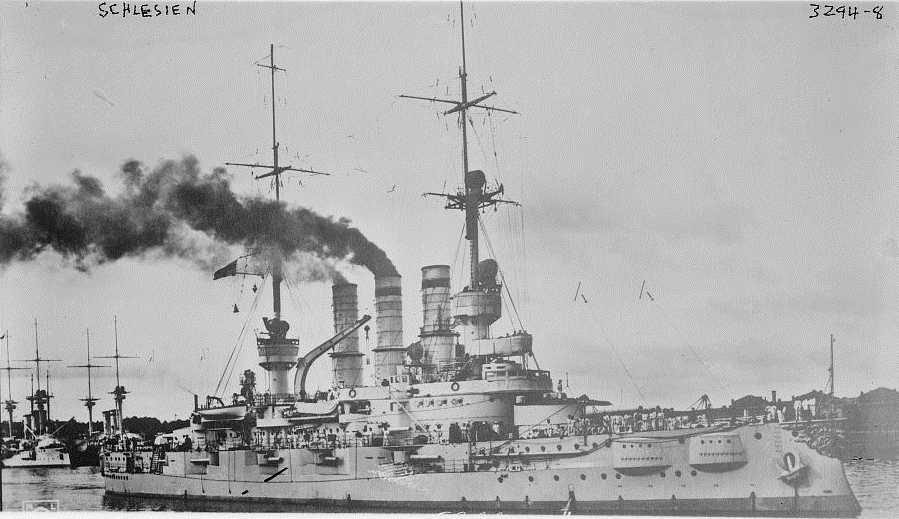

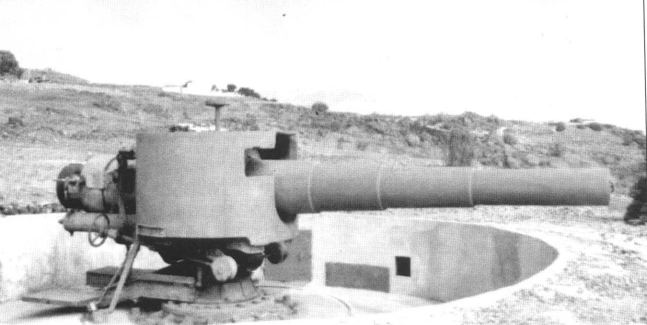
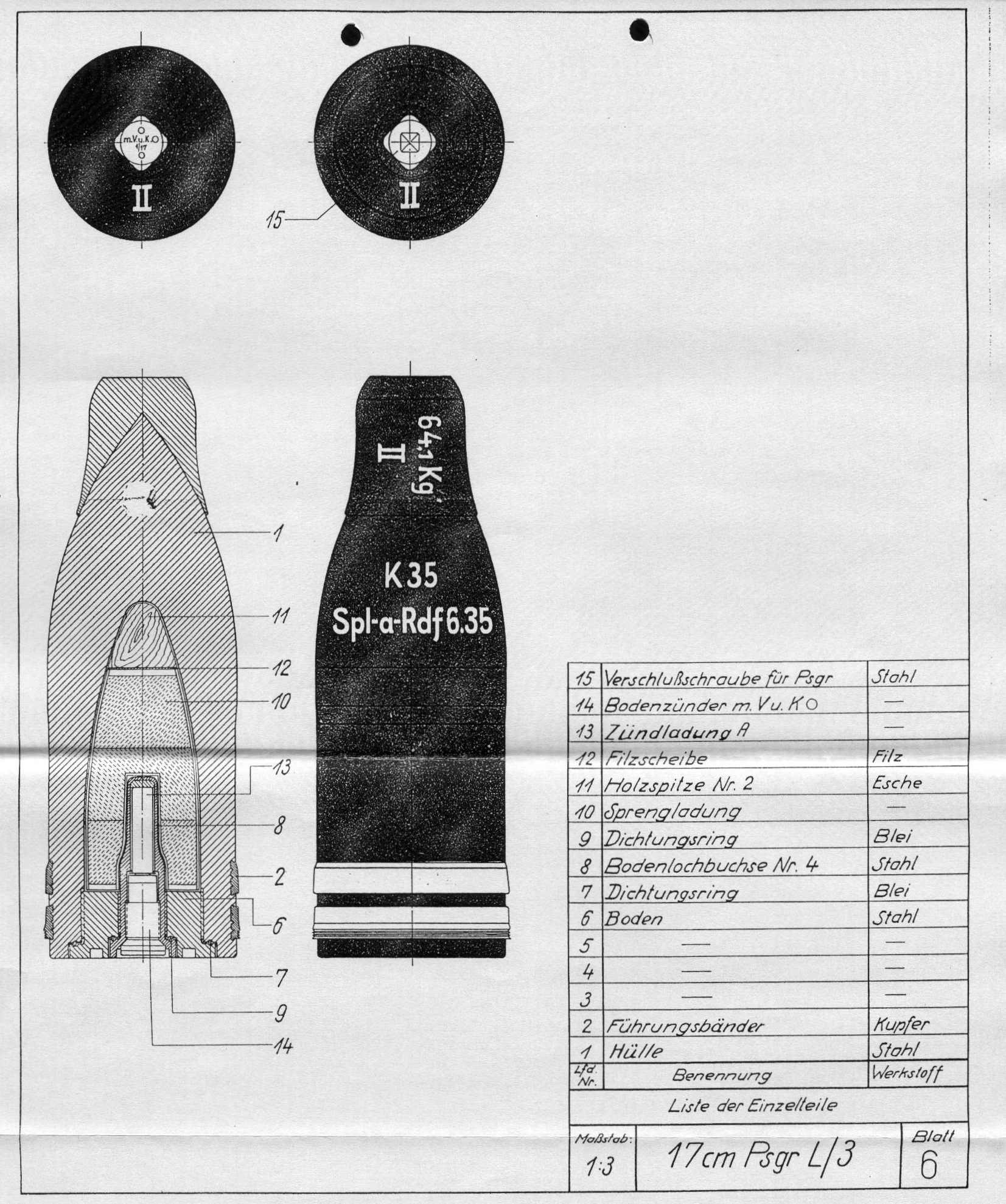
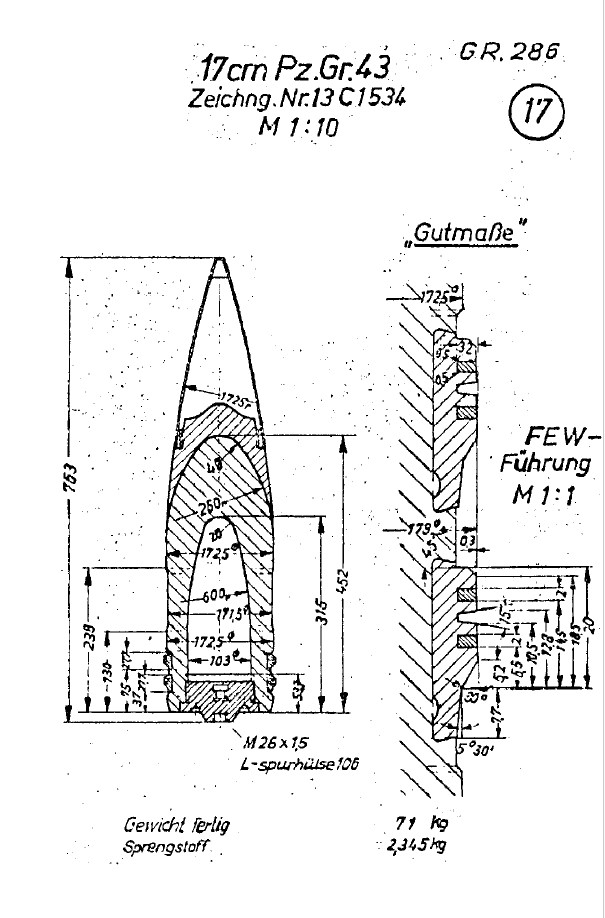
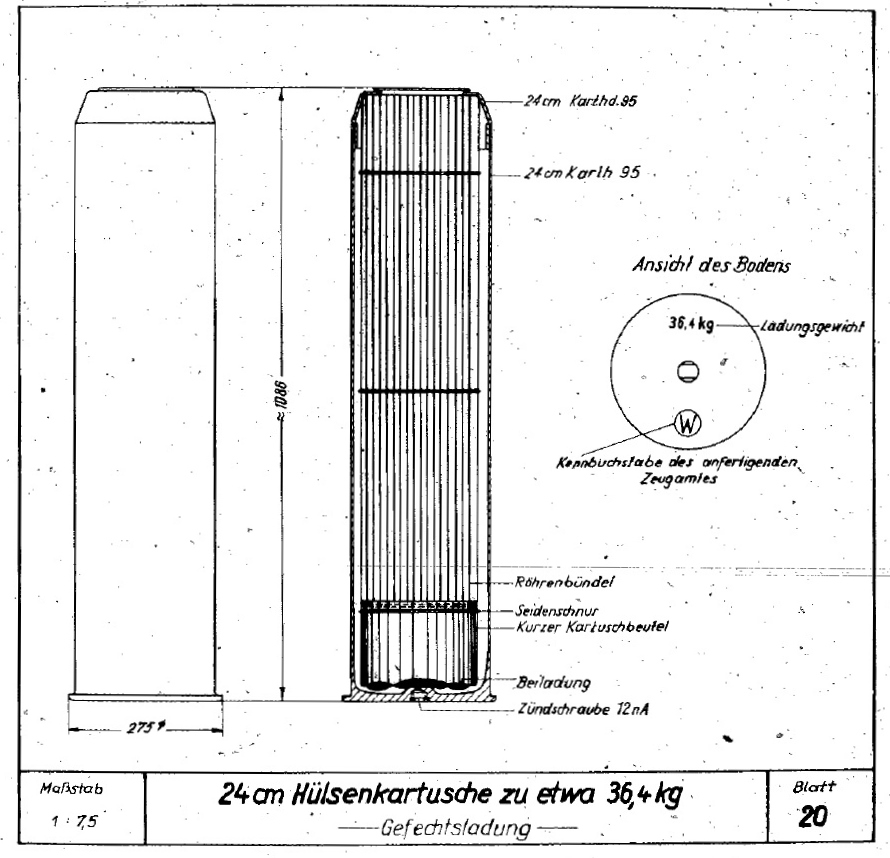
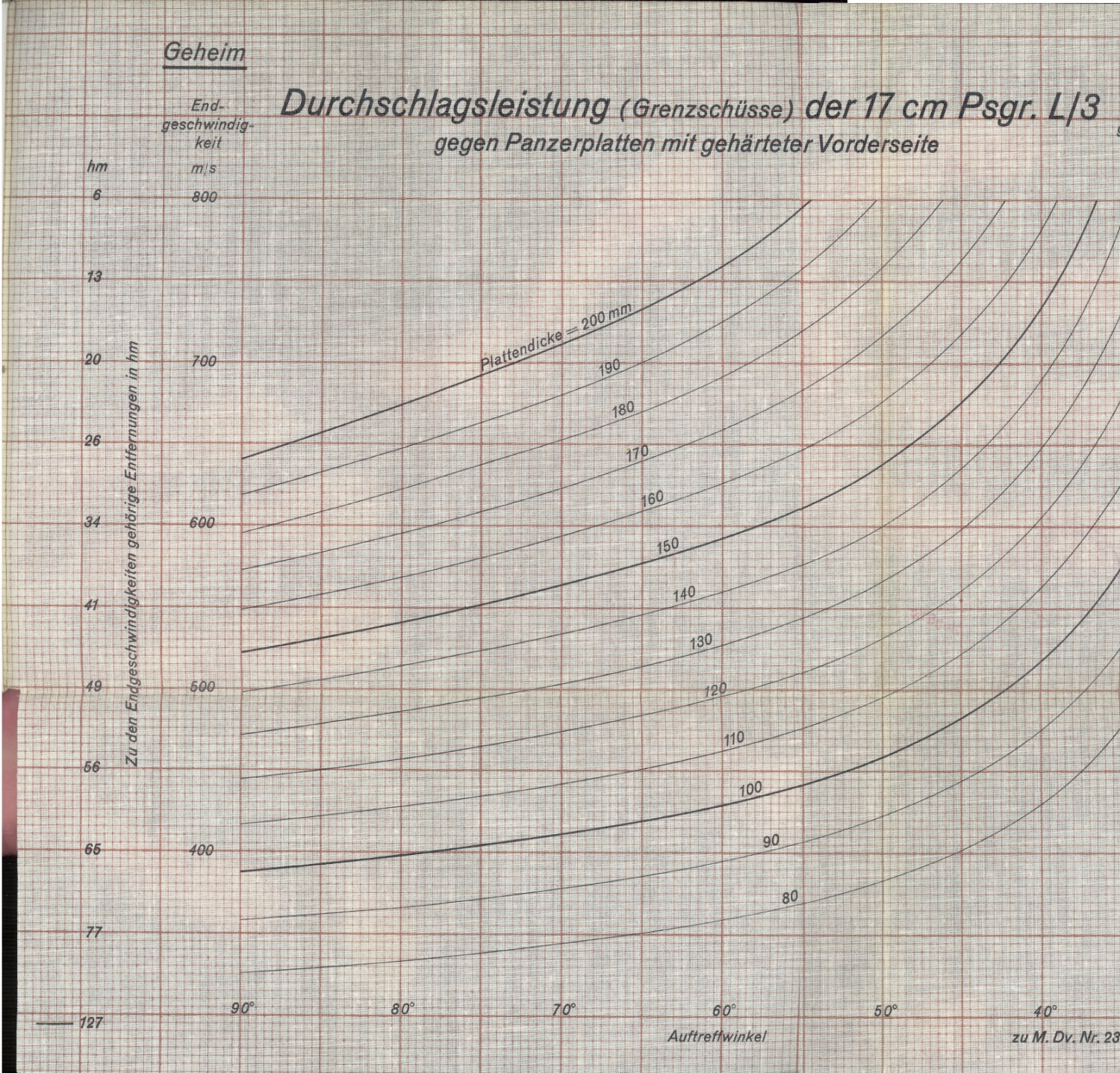
"Naval Weapons of World War Two" by John Campbell
"Naval Weapons of World War One" by Norman Friedman
"Conway's All the World's Fighting Ships: 1906-1922" by Randal Gray and Robert Gardiner (Editor)
"German Warships 1815-1945" by Erich Gröner
"German Artillery of World War Two" by Ian Hogg
"German Warships of World War I" by John C. Taylor
---
"Diagrams of Great War - German Naval Guns; Shells & Explosives; Fuses & Exploders" by The Royal Laboratory Woolwich 1921-22
"Merkbuch: über die Munition für die 17 cm SK L/40" M.Dv. Nr. 170,54 by Oberkommando der Kriegsmarine
"Beiheft zu ben Schußtafeln für die 17 cm S.K. L/40 der Schiffs und Küftenartillerie" M.Dv. Nr. 230,137 by Oberkommando der Kriegsmarine
"Munitionsvorschriften für die Kriegsmarine - Panzersprenggranaten (Psgr)" M.Dv. Nr. 190,1A2 by Oberkommando der Kriegsmarine
"Munitionsvorschriften für die Kriegsmarine - Hülsenkartusche" M.Dv. Nr. 190,4A1 by Oberkommando der Kriegsmarine
"Übersicht über die für die Marinegeschütze und deren Abk K zu verwendende Munition und ihre Einzelteile einschließlich Salut-
und Manöverladungen" M.Dv. Nr. 198 by Oberkommando der Kriegsmarine
---
Special help from Peter Lienau, Dave Alton, Javier Villarroya del Real and Thorsten Wahl
21 May 2006 - Benchmark
28 March 2010 - Added picture of Schlesien
06 February 2011 - Updated template, added some gun and projectile details
22 November 2012 - Added gun, projectile and mounting information
06 December 2014 - Redid photograph of Deutschland
05 February 2016 - Added photograph of gun being used as field artillery
24 February 2019 - Converted to HTML 5 format, reorganized notes and added data and sketches from M.Dv. Nr. 190,1A2
and M.Dv. Nr. 190,4A1
16 July 2019 - Minor changes for clarity
19 August 2020 - Added details on projectiles and armor penetration chart
04 February 2021 - Added information and photograph for guns acquired by Spain
14 January 2022 - Added details to "zu etwa" note
25 April 2024 - Added sketch and data of Psgr. 43
29 August 2024 - Added burster notes and propellant information
22 March 2025 - Corrected typographical error

